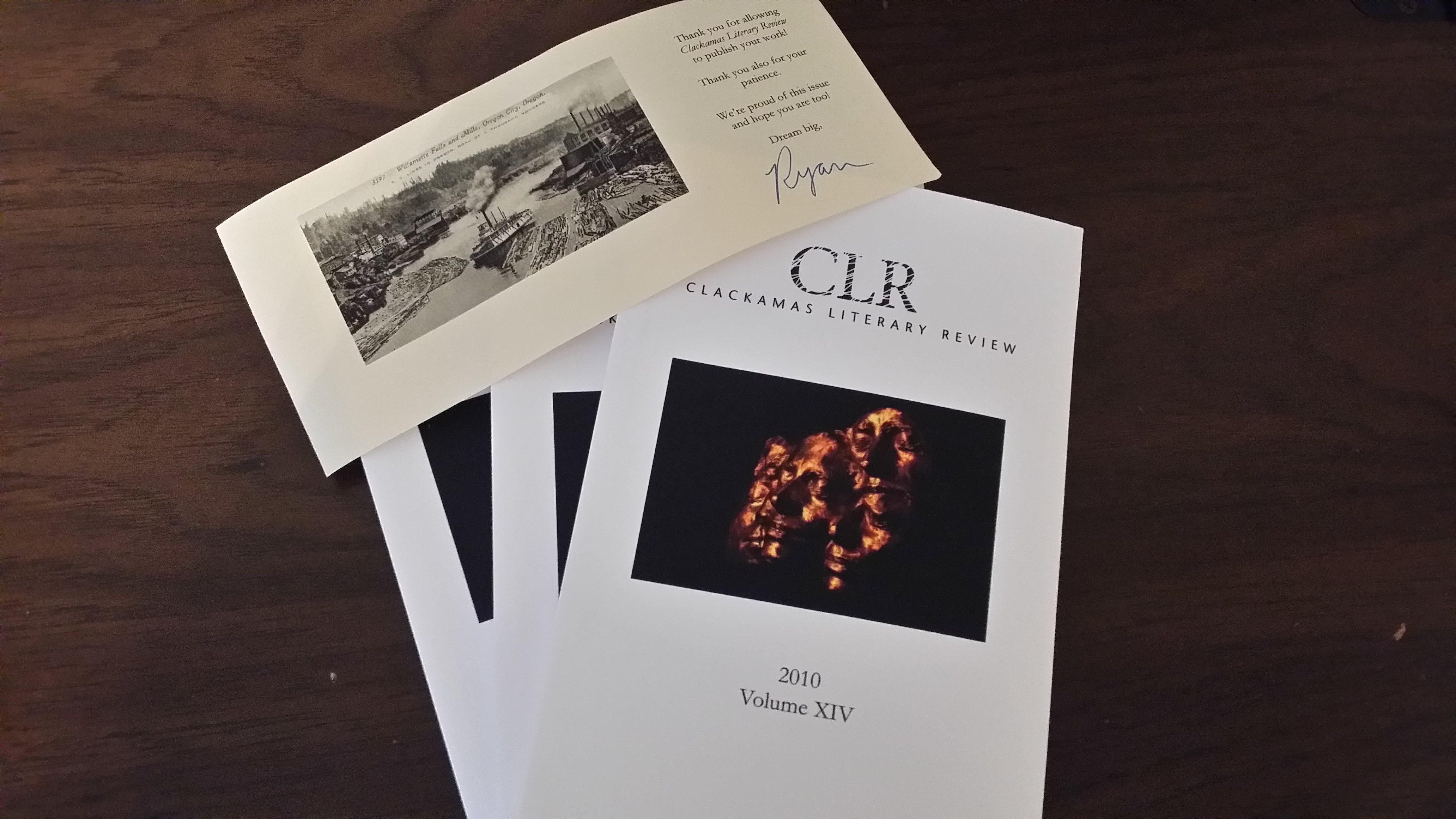Seeing as the newest season of Doctor Who just premiered, it seems only fitting that we should jump in our time machines for this post…
This week, I finally received my contributor copies of the first publication that ever accepted a piece of my work, Clackamas Literary Review. It is a damn fine publication, but in case you’re new to the drama that is Kelly I. Hitchcock’s literary life, here’s a summary of the timeline around this little interaction…
Sometime in 2009: I submit 3 poems to CLR for consideration.
February 2010: Clackamas accepts 2 of my poems for publication in their 2010 issue.
November 2011: I receive word the issue is going to drop publication any day.
February 2012: I once again receive word the issue is going to be published soon, and that I will receive 7 contributor copies instead of 2, and that I can purchase copies for $5.
March 2013: 2010 issue is published, with promise of shipment for 7 contributor copies, which I do not receive.
September 2013: Tired of waiting, I order my own copy for about $10. Thanks, Amazon Prime!
August 2014: I mysteriously receive 3 contributor copies in the mail.
You may be looking at this and thinking “Wow, that’s a really long publication cycle,” and you’d be right. What made the whole thing even weirder was that 1: I received 3 copies, not 2 (which was the original number) or 7 (which was the later promised number). 2: These poems came to the name I use on Facebook – not my Facebook author page, but my personal Facebook timeline, same punctuation and everything. 3: The envelope they came in looked like it had been attacked by a rabid wolverine; I don’t even know how the mailman got the books to stay in the manila bubble mailer.
With practices like this, it should surprise no one that more and more authors are moving away from traditional publishing. This isn’t really an anomaly; actually, authors have been screwed over on much larger scales than this by even more prestigious traditional publishing houses. Looking at timelines like these, it’s no wonder Type A authors (like me) who like control (like me) are publishing works at the rate of 1 new book on Amazon every 5 minutes.
That said, I truly am grateful that Clackamas Literary Review published my work and I have that name to attach to my own. I know it’s hard for university presses to get their jobs done in the face of changing market demands, technology, and budget constraints. I just wish they’d learn to do more with less a little faster than 5 years, and adapt quickly like the rest of the world’s been forced to.


